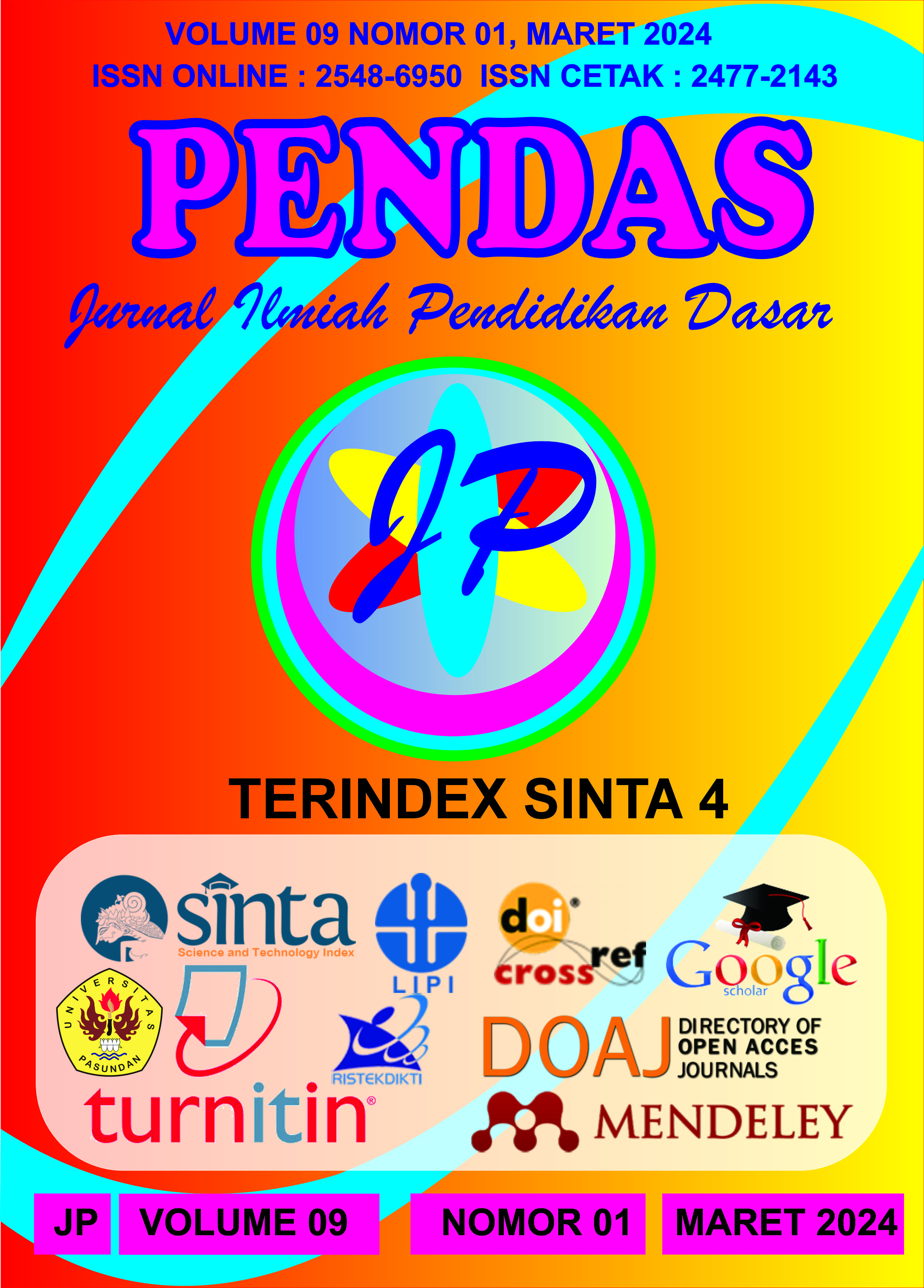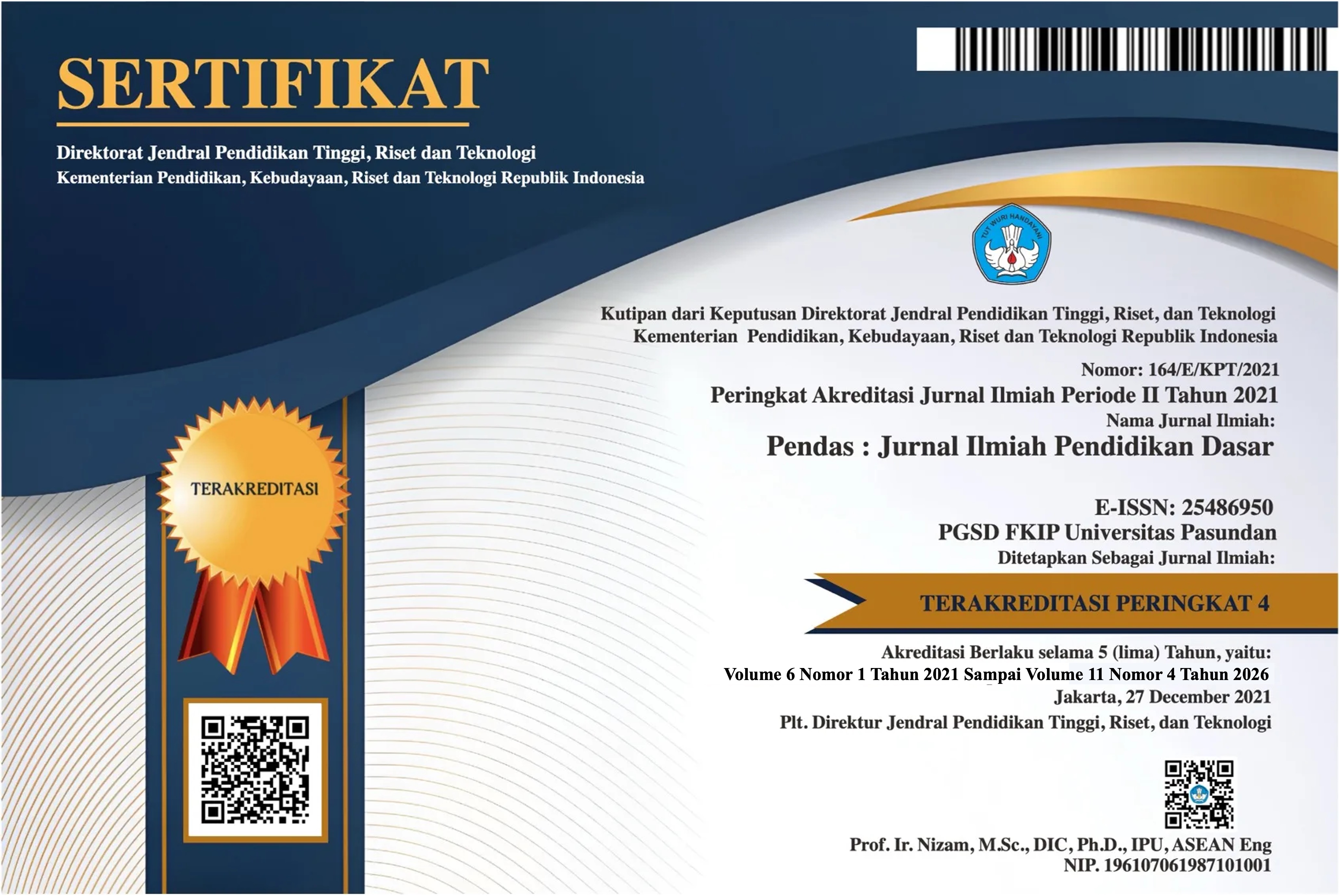PENGARUH MODEL PEMBELAJARAN PROJECT BASED LEARNING BERBASIS STEM TERHADAP KETERAMPILAN PROSES SAINS DAN HASIL BELAJAR SISWA KELAS V SD PADA PEMBELAJARAN IPA
DOI:
https://doi.org/10.23969/jp.v9i1.12651Keywords:
Project Based Learning, STEM, Science Process Skills, Learning Outcomes, Simple SteamshipAbstract
The purpose of this study is to (1) Describe the profile of science learning in Grade V Elementary School, (2) Prove the effect of STEM-based PJBL model on the science process skills (KPS) of Grade V Elementary School students in science learning, (3) Prove the effect of STEM-based PJBL model on the learning outcomes of Grade V Elementary School students in science learning, (4) Analyze and describe the differences in the effect between the STEM-based PJBL learning model and the Scientific learning model experiment method on the science process skills of Grade V Elementary School students in science learning, (5) Analyze and describe the differences in the effect between the STEM-based PJBL learning model and the Scientific learning model experiment method on the learning outcomes of Grade V Elementary School students in science learning. The research method used is a quasi-experiment with a design of Matching Pretest and Post-test Control Group Design. The population of the study is all Grade V Elementary School students in the Baleendah District, Bandung Regency. The sample was selected using purposive sampling technique. Four samples selected are SDN Cangkring 02 and SDN Sukamulya as experimental classes and SDN Ciptakarya and SDN Kawungsarigirang as control classes. The instruments used in this study are observation sheets, pretest/posttest questions, and documentation. The results of the study prove that (1) There is a difference in the research results between the experimental class and the control class that have grades A and B, (2) There is an effect of the STEM-based PJBL model on the KPS of Grade V Elementary School students in science learning, (3) There is an effect of the STEM-based PJBL model on the learning outcomes of Grade V Elementary School students in science learning, (4) There are differences in the effect between the STEM-based PJBL learning model and the Scientific learning model experiment method on the science process skills of Grade V Elementary School students in science learning, and (5) There is no difference in the effect between the STEM-based PJBL learning model and the Scientific learning model experiment method on the learning outcomes of Grade V Elementary School students in science learning. Students who receive learning with the STEM-based PJBL model perform better than students who receive learning with the Scientific learning model experiment method. As for learning outcomes, both the STEM-based PJBL learning model and the Scientific learning model experiment method can improve the learning outcomes of Grade V Elementary School students in science learning.Downloads
References
Conny, Semiawan dkk. (1992). Pendekatan Keterampilan Proses. Jakarta: Rineka Cipta.
Bender, WN (2012). Project-based learning: Differentiating instruction for the 21st century., books.google.com, https://books.google.com/books?hl=en&lr=&id=UL0-vVkipKwC&oi=fnd&pg=PP1&dq=bender&ots=pfSvXyAp03&sig=RRTB11dKw2DLHcovuY2isxu7Rb8
Diaz, D., & King, P. (2007). Adapting a Post-Secondary STEM Instructional Model to K-5 Mathematics Instruction. Clemson: Clemson University.
Dimyati dan Mudjiono. (2015). Belajar dan Pembelajaran. Jakarta: Rineka Cipta.
Eko Mulyadi. (2015). Penerapan Model Project Based Learning untuk Meningkatkan Kinerja dan Prestasi Belajar Fisika Siswa SMK. Jurnal Pendidikan Teknologi dan Kejuruan. Yogyakarta, UNY.
Lutfi, Ismail, Andi Asmawati Azis. (2018). Pengaruh Project Base Learning Terintegrasi STEM Terhadap Literasi Sains, Kreativitas dan Hasil Belajar Peserta Didik. Prosiding Seminar Nasional Biologi dan Pembelajarannya , 189-194.
McTighe, J., & Wiggins, G. (2005). Understanding by Design - Expanded 2nd ed. Virginia USA : Association for Supervision and Curicullum Development.
Nasution, S. (2000). Berbagai Pendekatan Dalam Proses Belajar Mengajar. Jakarta : Bumi Aksara.
National STEM Education Center. (2014). STEM education network manual. The Instutute for the Promotion of Teaching Science and Technology. Bangkok.
Partnership for 21st Century Learning. 2015. P21 Framework Definition. Retrieved 20 Januari 2024, from http://www.p21.org/our-work/p21- framework/P21_Framework_Definitions_New_Logo-2015.pdf
Permanasari, A. (2016). STEM Education: Inovasi dalam Pembelajaran Sains. Surakarta: Prosiding Seminar Nasional Pendidikan Sains.
Schleicher, A. (2018). PISA 2018 (Insights and interpretations). OECD Publishing (5), XVII, 236 p.; 26x17 cm.
Sugiyono. (2011). Metode Penelitian Kuantitatif, Kualitatif dan R&D. Bandung: Alfabeta.
Trilling, B., and Fadel, C. (2009). 21st Century Skills : Learning for Life in Our Times. United States of America : Jossey-Bass.
Zubaidah, S. (2018). “Mengenal 4C: Learning and Innovation Skills untuk Menghadapi Era Revolusi Industri 4.0”. Jurnal Research Gate.
Downloads
Published
Issue
Section
License
Copyright (c) 2024 Pendas : Jurnal Ilmiah Pendidikan Dasar

This work is licensed under a Creative Commons Attribution 4.0 International License.



















